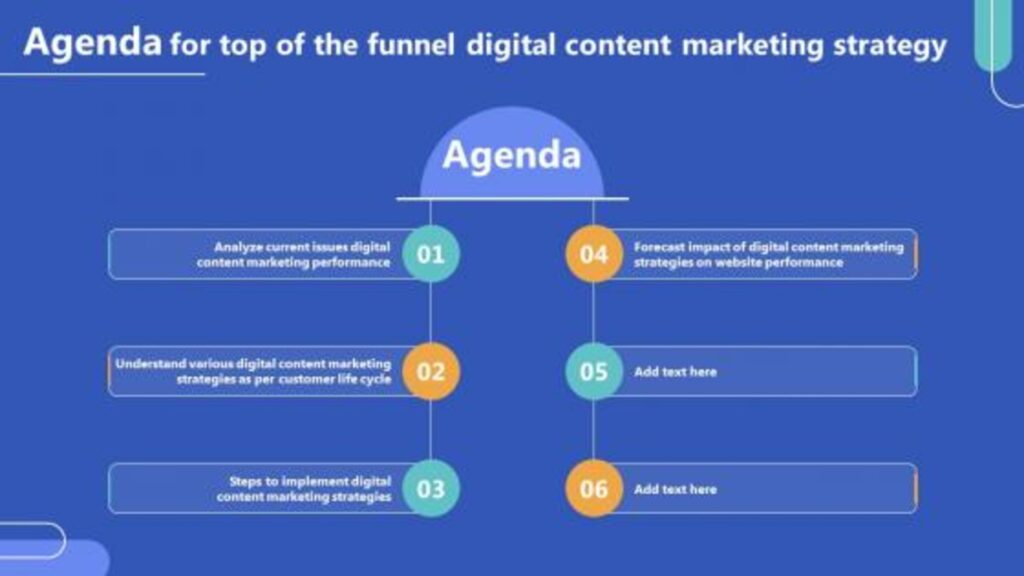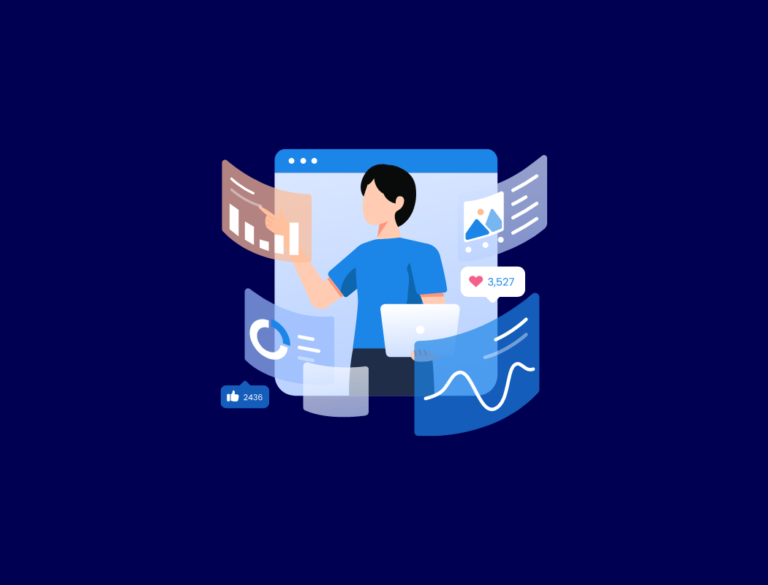How to Market a SaaS Product to Get Maximum Growth in 2025?
You have your SaaS (Software as a Service) product and are prepared for the next level of growth in this year 2025. Great! However, promoting SaaS products is not exactly the same as promoting the normal type of product. That’s not how business is done, it’s more about building relationships and that is done a little differently.
Marketing communication in particular must be effective from the first time the customer gets to know about the product right up to the stage where they are a user of the product.
Having SaaS marketing strategies allows you to reach your targets, be in touch with those potential customers, and make them engaged all the time so the company can experience constant growth. In this article, we explain everything you need to know on how to market your SaaS product. We will discuss audience targeting, building a proper brand image, and launching a wise digital marketing campaign. Read on to know all the information in detail.
Understanding Your Target Audience
Your target audience is the people who you wish to consume your product or service thus it is prudent to have an in-depth understanding of them.

Understanding Who Your Perfect Customers Are?
First, you should define the identity of your target customer for SaaS customer acquisition. It is the qualitative description of a customer that would likely benefit from your product substantially—by bringing value to both your product and your company.
Creating Customer Personas
After defining your target market, let’s create buyer personas: These are phony clients that depict the type of customer you will want to attract to your business. They’re derived from actual data and promote better customer insight.
Building a Strong Online Presence
First of all, your online presence should be perceived as your SaaS product’s home field. That is where potential customers will get the first impression about you and your product and decide whether or not they should place their trust in you.
Creating a Professional, Business Website
The website is sometimes the initial point of contact you get with prospective customers in your SaaS business. So, make it count!
As highlighted by BrightEdge, 68 percent of web transactions start with a search engine. From experience, I know that SEO generates more than 1,000% more traffic than organic social media marketing.
SaaS Content Marketing Strategies
They play the role of the engine through which all the operations of SaaS marketing happen. It’s about posting information that would be useful and engaging to your audience. Consider it as sharing a few tips with them by offering some goods for free, and they will ultimately become your loyal customer consuming your services.
Which Content Should You Produce?
There are many types of content you can create, such as:
Blog Posts
Tutorials and How-To Guides
Infographics
Videos
To get a more powerful result, create profound material like case studies, whitepapers, or eBooks.
Get Found with SEO
SEO is a very important tactic in content marketing. When you learn how to optimize your content for search engines, you will have a flood of free traffic to your site.
HubSpot reveals that 60% of marketers agree that inbound (such as SEO, blogs, etc.) is the highest quality of leads. There is a high quality of traffic from SEO and people arriving through search engines close a deal at 14.6%.
Digital Marketing for SaaS
Techniques needed for evaluations of digital marketing campaigns are like having a set of tools in a toolbox as everyone has their own tool they prefer to use when it comes to marketing products to potential consumers online. Now let’s explore several strategies to help your SaaS business expand.

Email Marketing Campaigns
Email marketing is very effective especially when it is used to market to potential customers that are already on your mailing list. Here’s how to make it work:
- Have subcategories of the email list
- Utilize drip emails that would help to nurture leads through the funnel.
- Make your emails interesting!
- Experimenting with the subject lines, content, and the type of CTAs can be done to find out, which of them works best.
Social Media Marketing
Social media sites present views to reach your market segment. Here’s how to leverage social media marketing for SaaS products:
Choose the Right Platforms: Determine which platforms are more active for your target demographic and hone in on those platforms. LinkedIn in this case is by far the most friendly platform as it is a business and business-to-business platform where decision makers are likely to spend their time.
Paid Social Media Marketing: Advertising that can be placed either on paid blogs or on social networks such as Facebook, LinkedIn, Twitter, etc. Selecting the right audience to make sure your message gets to the right people through demographic targeting, behavioral targeting, and interest targeting.
Organic Social Media Marketing: Plan what you’ll share. From time to time, it should consist of informative posts, advertisements, and fun posts. Always use pictures and/or videos to catch your attention. Don’t forget about YouTube! Use webinars, instructional, product, and even idea-promoting videos for your particular audience.
Build Community: Interact with your followers. Go to the comment section, engage with the people, and actively participate.
Content Strategy: Plan what you’ll share. Interleaved with information dissemination, there have been companies advertising their products and services, and other humorous posts. Images and especially videos tend to attract the viewer’s attention. Don’t forget about YouTube! Use them to develop instructional, product, or idea exploration videos.
SEO (Search Engine Optimization)
SEO is more similar to making an investment in the long-term ranking of your website. It allows you to rank higher on searches which means people can find you through a search more often. Did you know that 96.55% of all pages, any content piece that’s written on the internet, receives no traffic from Google? This is due to the fact that currently, the company is not very keen on SEO optimization.
“Here are some key aspects of SEO SaaS growth tactics:”
Technical SEO
On-Page SEO
Off-Page SEO
Paid Advertising
It can be of two types Paid per Click (PPC) Advertising or Pay per Impression (Display Ads).
By advertising, you can immediately reach a wider audience in a shorter period of time.
SaaS Lead Generation and Nurturing
It is all about capturing potential clients and then converting them into real paying clients. Let’s break it down.
Lead Magnets
A lead magnet is a valuable asset that you give to people in exchange for their information.
CRM and Email Nurturing
Once you have people who show an interest, you need to build a relationship with them. In other words, it means establishing a rapport with them and then patiently steering them to make the purchase.
A CRM system is in fact exactly like a file that contains all information about your lead. It can
Email nurturing sequences are the type of emails that you send to your leads as a follow-up.
Sales Funnel Optimization

A SaaS Sales Funnel can be described as a model that maps the customer’s journey of acquiring your SaaS product via purchasing it. Now let us see how can this journey be made effective and how can conversion rates be increased.
A Smooth Customer Journey
You will aim to ensure that there is a seamless customer experience. It is about knowing what happens the first time someone hears about your product, the second time, and even the time they decide to purchase the product.
Boosting Conversions with CRO
CRO is about making more people do the desired thing, for instance, if you want to get more subscriptions to your software trial or make a purchase.
Here are some tricks to try:
A/B Testing: Test changes to your website, landing pages, and email communications, and determine which of the different variations deliver the greatest results.
Strong Calls to Action (CTAs): Provide actionable and persuasive call-to-actions to move to the next step. For example, “Start Your Free Trial” or Get Started Now” and the like.
Social Proof: Advertise previous success for a product to secure the customers’ attention.
Simplified Forms: Make the forms compact so that the client does not get inconvenienced while filling them.
Urgency and Scarcity: It has been argued by experts that putting a time restriction on a particular deal, for instance through the use of limited time offer statements, would make people act faster.
Optimized User Experience: Make certain your site is fast, responsive, and easy to use. People do not enjoy slow or lagging sites!
Organising Content for each Funnel Stage
In addition, you should enhance the structure of the content marketing strategy to receive better results in the SaaS sales funnel. Tailor your content to the different stages of the funnel:
Top of the Funnel (TOFU) – Awareness Stage: The objective is more targeted, directing people to your site or a specific part of it and letting them know what your product does to solve their problems. Social marketing tools that could be used include education blog post, social site content and infographics.
Middle of the Funnel (MOFU) – Consideration Stage: Goal of this stage is to establish trust and to convince the audience/consumer about the value of your product. Webinars, case studies, and demo videos should be used to show how your solution meets the needs of your user.
Bottom of the Funnel (BOFU) – Conversion Stage: Now it is time to call to action and convince prospective customers that it’s time to buy. As you continue marketing your product, provide strong product demos, appealing to customers’ success stories as well as extensive case studies to affirm the need for your product.
When using these techniques, it is possible to shape an optimized SaaS sales funnel that will eventually help transform the customer journey in the direction of higher results and business development.
Customer Retention and Upselling
Your customers should always be happy and, where possible, you should identify how you can make them spend more on your SaaS business. Here is the breakdown of how to begin to focus on improving customer success.
Make Customer Success a Priority
Customer success is the understanding of achieving the customer’s objectives while they are engaging your product or service.

Here are some things you can do:
Onboarding: Develop a clear, easy-to-follow system to assist your first-time buyers to navigate and use your product.
Regular Check-Ins: Engage with customers to know how they are getting on and if there’s any way that you can assist.
Educational Resources: To keep your customers engaged and well-informed, provide how-tos, lessons, and seminars on how to use your product.
Dedicated Support: Always ensure you have available competent support staff that can attend to the customers’ needs as soon as possible.
Upselling and Cross-Selling Strategies
As the name implies, upselling and cross-selling identify additional products that the customer already wants and offers to them.
Upselling is making the customer switch from his current plan to a more expensive one, or using a higher-end version of your product as a selling point.
Cross-selling is when they offer another item that complements what they already use or need.
Measuring and Analyzing Success
The process of measurement and analysis of your results is like referring to the map to be sure that you are still on the right course. But it’s important to distinguish what specific areas of your SaaS marketing strategy are successful, and where you can use some optimization help.
Important Things to Note
Here are some important numbers to keep an eye on:
Customer Acquisition Cost (CAC): How much a new customer will cost you?
Customer Lifetime Value (CLV): What do you think would be your average revenue per customer in the future?
Monthly Recurring Revenue (MRR): This is the amount of money you can always expect to receive from your customers every month. It is a great tool to analyze how the company’s revenues are increasing.
Churn Rate: What percentage of the customers are dropping off the service?
Conversion Rate: Out of the total website visitors or leads, what proportion can really become customers?
Lead-to-Customer Rate: What percentage of your leads finally become your customers?
Net Promoter Score (NPS): To what extent would clients be ready to recommend your product?
Engagement Metrics: This comprises things such as:
- The traffic that flows through your website
- The number of hits on different pages of your website
- Duration of time users spend in your website.
These can inform a lot about the usage of content.
Use Analytics to Get Smarter
Most of these parameters can be tracked using Analytics platforms like Google Analytics, other Marketing portals, or analytical software compatible with SaaS-type models such as Hub Spot. The data must be analyzed in search of trends and patterns as they were in the previous step. For instance, which marketing channels attract many customers? What gets people interested?
Try out different forms of your marketing materials and assess which of the versions can bring in higher response rates.
FAQs
What are the best strategies to market a SaaS product?
Integrate SaaS inbound marketing with outbound. In commercial applications, there is inbound that captures customer attention by providing them with material they find useful; there is also outbound that directly contacts the customer. The subcategories within content marketing include SEO, social media, email marketing, and paid advertisement.
How can I increase customer acquisition for my SaaS product?
- The emphasis of effort to first funnel, through a campaign-driven approach, content marketing strategies, and lead magnets.
- Nurture leads with email follow-ups and demonstrations.
- Ensure that your website’s language and aesthetics include specific CTAs and a simple sign-up flap.
What is the role of content marketing in SaaS promotion?
Content marketing informs target customers, helps to build trust and creates the image of an expert company. It can bring organic traffic from the SERP and continue interacting with the leads in the sales funnel.
How do I create an effective SaaS sales funnel?
- Define stages: Awareness, Interest, Evaluation, Decision, Purchase/Action, and Retautomatedion.
- Thus a need to match content and tactics to the stages in order to lead the prospect to conversion and customer loyalty.
What digital marketing tactics work best for SaaS products?
- SEO for organic visibility.
- Content marketing for lead nurturing and brand building.
- Social media for engagement and community building.
- Email marketing for personalized communication and lead nurturing.
- Paid advertising for targeted reach and lead generation.
How important is SEO in SaaS marketing?
SEO is very crucial for SaaS marketing. Realizing that it enhances your site’s rank, you attract organic visitors, leading to potential customers.
What are some effective lead-generation techniques for SaaS?
- Offer free trials or demos.
- Prepare such types of content as ebooks and webinars.
- Advertise in areas that are closely connected to the product being sold or to the target audience in general.
- Attend trade shows and webinars.
How can social media marketing benefit a SaaS product?
- Establishing brand loyalty alongside targeting the right potential customers.
- Get more traffic to drive to your site by increasing sharing through social platforms.
- Build a community for your product.
What are the key metrics to track in SaaS marketing?
- Website Traffic
- Lead generation
- Conversion rates
- Customer acquisition cost (CAC)
- Churn rate
- Monthly recurring revenue (MRR)
How do I optimize my SaaS website for conversions?
- Ensure clear and compelling CTAs.
- Make it easy for visitors to sign up or request a demo.
- Use strong visuals and concise copy.
- Optimize landing pages for specific campaigns.
- A/B tests different elements to find what works best.
Conclusion
In this routing, let it be clear that effective SaaS marketing is not a one-dimensional effort. To initiate, proceed to identify, analyze, and target your audience appropriately; you need a reliable and good online platform i.e. website, and rich content.
Use various content marketing techniques and various digital marketing approaches such as email, social media, and paid media. Engage and build your potential customers via promotional campaigns and synthesize your sales funnel to increase sales. Do not ignore retention and remember about potential of customer service and selling more to generate more sales.
It is productive to measure and analyze the results on a continuous basis to perfect the approaches and gain permanent growth. In the hunt for a long-term promotional technique, it will be beneficial to promote SEO to make sure your site gets a continuous stream of visitors and sales.
Excited to make your SaaS business grow in 2025 and more? With these strategies in place, and when you’ve made SEO an important part of your marketing mix, you are on your way to achieving major growth.


